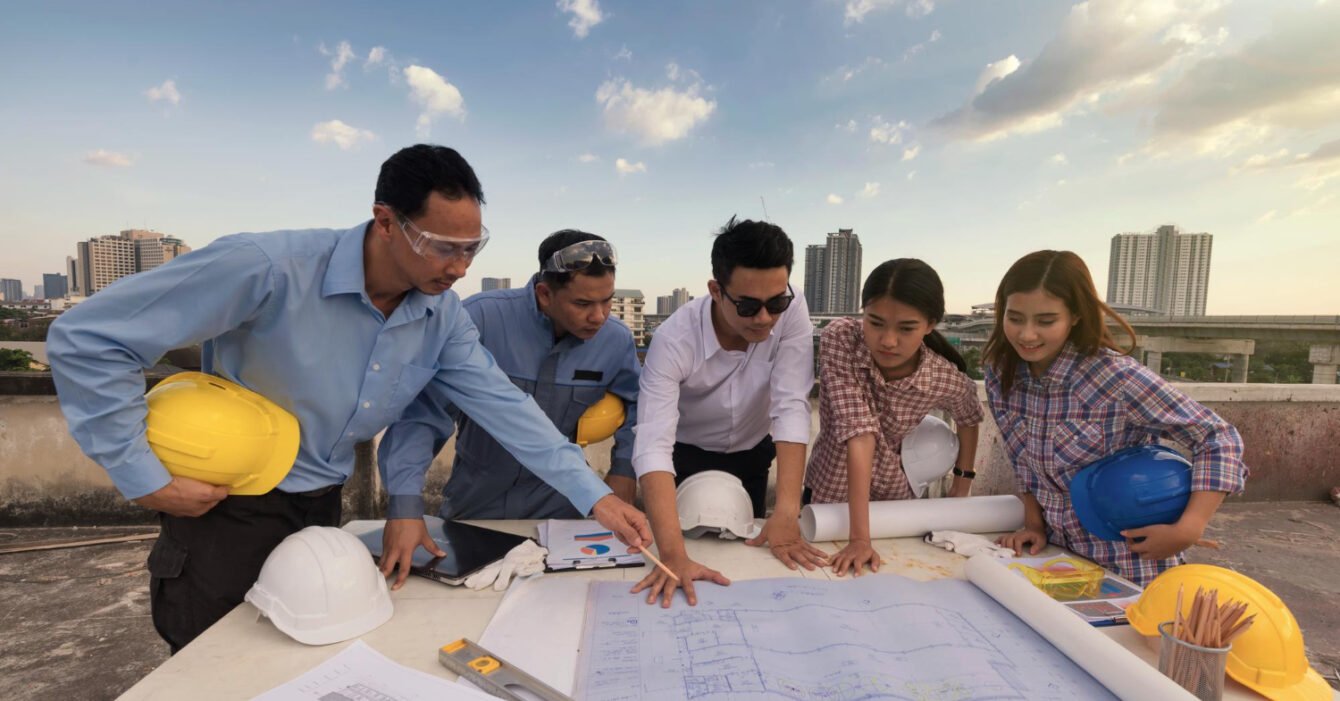The Indonesian construction industry is experiencing rapid growth. With a projected annual growth rate of 4% to 7% between 2024 and 2029, the sector is a vital driver of the national economy. Infrastructure investments reached IDR 157.8 trillion (USD 11.3 billion) in 2018, contributing 1.28% to GDP growth. However, alongside this growth lies a challenge that threatens to hold back progress: a significant shortage of skilled labor. It’s no wonder that the country is exploring training programs for Indonesia Construction Workforce Development.
Skill Shortages in the Construction Sector
The construction sector employs approximately 7.62 million workers (as of 2019), making it a cornerstone of Indonesia’s labor market. Despite its size, only 7.4% of construction workers are certified, highlighting a substantial skills gap. Certification reflects the competency and readiness of workers to meet modern construction demands, yet many workers still lack formal qualifications.

This gap has real-world implications. Projects often face delays, cost overruns, and quality issues due to insufficient expertise. A 2022 study revealed that even with available training, many workers still lack the advanced skills required for complex projects, such as the Nusantara smart city initiative. These challenges emphasize the urgent need for a more robust approach to Indonesia Construction Workforce Development.
Government’s Role in Indonesia Construction Workforce Development
Recognizing the issue, the Indonesian government has made Indonesia Construction Workforce Development training a priority. The Kartu Prakerja program, a flagship initiative, has trained over 18 million participants since its inception. The program allocates IDR 4.2 million per participant, underlining the government’s commitment to equipping workers with the skills necessary for industries like construction.
In 2022, specialized training programs focused on large-scale projects are available. For instance, 9,800 workers received advanced training for the Nusantara smart city, exceeding initial targets by over 2,500 participants. These programs included modules on cutting-edge techniques like Building Information Modeling (BIM), which is essential for modern infrastructure projects.
Additionally, the government is developing large-scale training initiatives to improve the overall quality of the workforce. These efforts aim to close the gap between workforce capabilities and the demands of the growing construction sector.
The Importance of Certification for Indonesia Construction Workforce Development
While training programs are a step in the right direction, increasing certification rates is equally crucial. Certification not only ensures workers meet professional standards but also boosts efficiency and safety on construction sites. However, achieving this goal requires a coordinated approach, including partnerships between the government, private sector, and educational institutions.
With only 7.4% of construction workers certified, the sector has significant room for improvement. Scaling up certification efforts could empower workers with the confidence and skills needed to contribute more effectively to projects, particularly those requiring advanced technologies.
Economic and Social Benefits of Upskilling
Investing in workforce development benefits more than just the construction sector. Upskilling workers leads to better job opportunities, higher wages, and improved job security. For the economy, a skilled workforce means enhanced productivity and the ability to execute large-scale projects on time and within budget.
Programs like Kartu Prakerja demonstrate how government-led initiatives can transform workforce quality. By allocating substantial resources to training, the government is not only addressing skill gaps but also laying the foundation for sustained economic growth.
The Future of Indonesia Construction Workforce Development
The construction sector is poised for continued expansion, but its success hinges on the quality of its workforce. Ultimately, Indonesia Construction Workforce Development efforts hold the key to unlocking the sector’s full potential. With the right focus on upskilling and certification, the nation can ensure that its infrastructure projects not only meet today’s demands but also build a better tomorrow.

